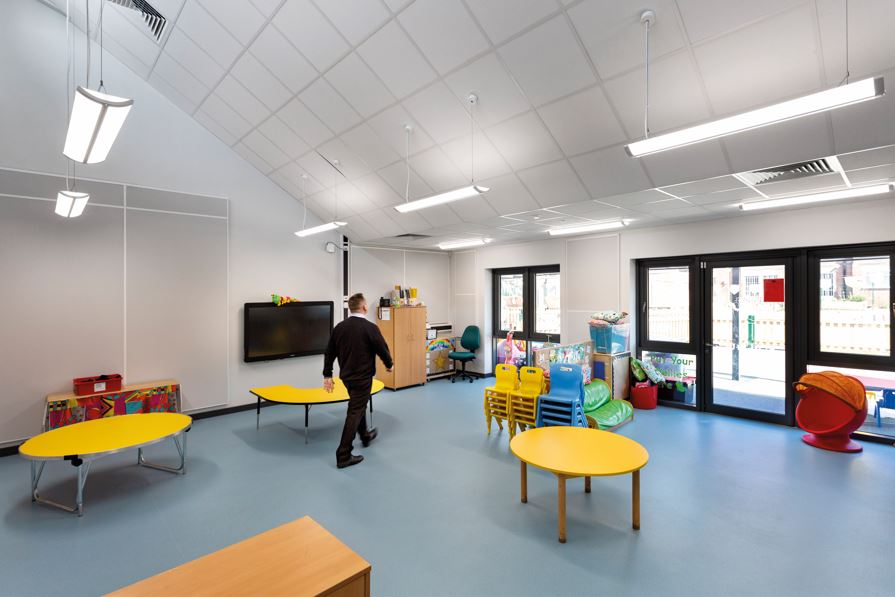
Poor lighting can cause fatigue, eye strain and glare. But installing a high quality energy efficient lighting solution helps create the best possible environment, enables higher concentration and has a positive and stimulating influence on effective learning.
The key factors for consideration when creating the optimum lighting solution include the use of high quality, energy efficient LED luminaires, good colour rendering (Ra) over 80, colour temperatures between 2700K - 6500K, flicker-free luminaires, the use of high quality lighting controls and a long service life to ensure the lighting quality is maintained over time. The type of activity being undertaken, the spatial environment and face-to-face communication should also be considered.
The five key points of consideration or education lighting are:
What standards apply: the key European standard for indoor workplace lighting is EN 12464-1. Among other things, it sets recommended light levels and glare limits for different areas and tasks. The Society of Light and Lighting’s Lighting Guide 5 offers guidance specifically for education, and there are other relevant standards for particular areas such as emergency lighting and acoustics including BREEAM, LEED and WELL.
How to use natural daylight: natural light is essential and there should be a connection between daylight and artificial light. Daylight should be the primary source of light for schools (daylight factors of 4 – 5 % and a minimum of 20% of glazing on external walls). Natural daylight also ensures students and staff retain a link to the changing light/weather conditions. Human performance can also vary, depending on the time of day or night (Circadian Rhythms). Our body and mind work most effectively in the morning and late afternoon. Light contributes to our vision and synchronises the biological clock which controls our sleep and wakefulness cycles. A high intake of daylight improves our sleep, performance and mood and therefore reduces drowsiness.
Understand the space: when designing a lighting scheme for the educational environment you should take into account the amount of daylight in the room, the planning and positioning of the luminaires, and the use of highly efficient lighting controls with the ability to pre- programme lighting scenarios according to the space in use and the time of day to ensure that all the requirements of the space are met.
How to light people’s faces: great lighting should enable you to communicate effectively with those around you in an atmosphere that feels conducive to learning. Good communication relies on good facial modelling, this is achieved by balancing diffuse and directional light.
Getting the best out of light: LED advances mean that today’s products offer high performance, good quality illumination and have a long life span. They are also very economical and keep lifetime costs to a minimum. Lighting controls play a major role and can increase flexibility and efficiency. The use of digital lighting management solutions from single rooms to entire buildings provides a great tool for getting the very best out of light. Schools are legally required to provide emergency lighting and to ensure that it is regularly tested and maintained. Emergency lighting should incorporate the latest LED technology, offer longer lifetime, maximum flexibility, high efficiency with ease of installation and maintenance. Other considerations include product longevity, manufacturer reliability and if there is a product guarantee. Room layouts may change at a later date so the installed lighting solution should be flexible and adaptable to enable the incorporation of lighting controls and other functions in the future. High quality lighting products are built with the future in mind. Good lighting is not about good teaching, it is about effective learning.